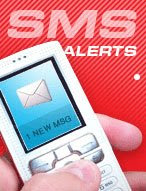There are as many stats on text messaging usage as there are text messages sent every day, so I won’t list any here. You know everyone is texting, now it’s time to figure out the right way to go about it. Text messaging is the perfect medium for delivering brief pieces of information, offers or reminders to customers, members or employees with a nearly 100% chance of having it opened and read (open rates are north of 90%).
As I type I have 6 voicemails that need listening to and not a single unread text message. Reading them is too easy. Sending text message alerts, reminders and offers CAN be sent via your mobile phone, but if you’re sending them for business, it’s recommended that you use a web-based service to manage everything.
5 Tips for Sending Text Message Alerts, Reminders and Offers
1) Be consistent, but don’t send texts too often.
People want to be informed, not blasted. In fact, saying the phrase “text message blast” out loud on our offices will either get a giggle or a roll of the eyes, depending on who hears you say it. Before SyFy canceled Caprica (I’m still upset about it), I got Caprica SMS alerts every Friday reminding me that it was on, always with another little piece of information on the message. I already knew it, but the message provided me with a reason to get happy a little earlier in the day. Why not?
2) Don’t use “free” text message email (aka SMTP to SMS).
Kim Dushinski has a great post called “No Such Thing as Free Text Messaging“, definitely worth a read, especially if you’re using text messaging for marketing purposes. If you’re using SMTP or an un-certified text messaging service (“cheap, bulk SMS here!”, you’ve seen them), it’s not a matter of “if” but “when” you’ll get blocked by the mobile carriers. Mobile carriers love money as much as they hate spam and in quite a few occasions where free texting is concerned, they’re not getting anything they love.
3) Make it worthwhile for the recipient.
Whether it’s a special savings offer, coupon, a reminder to make sure someone shows up for a scheduled meeting or a last minute head’s up that something has changed, use the medium wisely. My dentist charges $75 if I miss an appointment, I’ll gladly take the day before text reminding me of it.
4) Use text messaging as a two-way dialogue, not a one way channel.
Imagine getting a phone call, email or text message from a friend or family member that you couldn’t respond to. Frustrating and the notion even sounds a little silly. The best thing about texting for businesses and organizations now is that there are plenty of services (not all, mind you) that enable users to reply back to an SMS once they receive it. It’s entirely up to you, but if a mobile service provider doesn’t let those receiving the text reply back to you to have a conversation with your customer and do so efficiently, you’re not utilizing “all parts of the buffalo” (apologies to any vegetarians).
5) Leave some character space for recipients to forward the message.
I was going to use a different tip and then someone told me about this from Yea-Nay Marketing’s blog that I think is definitely worth sharing. Text messages are 160 characters long (the length was determined by the average number of characters on a postcard). It’s plenty of space, so leave some in case the person receiving your text wants to forward it to some friends. Yea-Nay recommends only using 120 characters for your message, but it’s whatever you feel like. FYI: This is awesome! including the space after the ! is 17 characters, plenty of room for your customer, patron, member, etc to share with friends. If you’re looking for a SMS character counter, you’re more than welcome to use ours even if we never do business together. See? While there’s no such thing as free text messaging. There is a free text messaging character counter.
More info:
The MMA (Mobile Marketing Association) has published new guidelines for 2011. The guide is 165 pages long, so i embedded the slideshare version down below if you’d like to click through it. For something possibly a little more exciting to you, check out their mobile marketing case studies.


Thanks for the reference! I really liked #4. That is such a point of differentiation. When a company engages rather than simply broadcasting, their brand has stepped up a notch in the minds of their prospects. Thanks again for sharing!